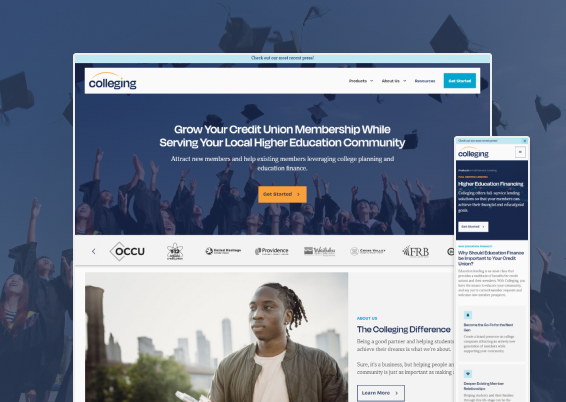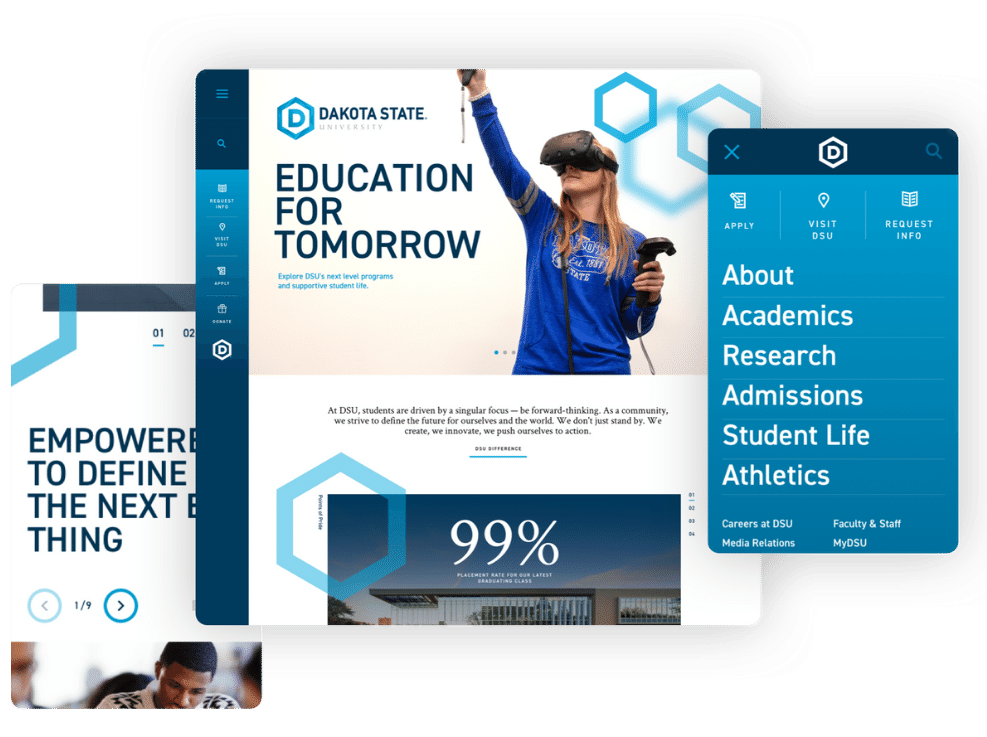How Website Design Can Improve Conversion Rates and Sales
How Website Design Can Improve Conversion Rates and Sales
Blog Article
Increase Engagement With Ingenious Web Site Style Solutions
An attentively crafted customer experience, underpinned by critical visual style and interactive aspects, can dramatically enhance individual engagement. By checking out numerous approaches such as responsive design and personalized content, organizations can develop a platform that not only astounds users yet likewise promotes long-term loyalty.

Understanding User Experience
Understanding user experience (UX) is essential for developing effective web site style options, as it straight affects how customers interact with digital platforms. A comprehensive UX method encompasses various elements, consisting of user, accessibility, and use fulfillment, all of which add to the overall performance of a site.
To start with, functionality concentrates on just how easily users can navigate and find the details they seek - website design. A well-structured design, instinctive navigating, and clear calls to activity are essential parts that improve use. Availability ensures that all individuals, consisting of those with disabilities, can effectively communicate with the website. This includes making content that is compliant with availability requirements and can be easily accessed utilizing assistive innovations.
Additionally, comprehending individual identities is vital for customizing the experience to meet particular audience needs. By carrying out customer research and screening, designers can collect understandings that notify design choices, making sure the website not only satisfies visual objectives but likewise fulfills practical demands. Ultimately, a thoughtful strategy to UX style promotes involvement, motivates retention, and enhances general customer complete satisfaction, which are vital for the success of any digital system.
Visual Style Techniques
Integrating reliable visual layout approaches is essential for recording user focus and boosting the overall user experience on an internet site. A well-thought-out aesthetic pecking order overviews users through the web content, allowing them to conveniently browse and soak up information. This can be attained through the calculated use typography, color pattern, and spacing, which collectively create a interesting and cohesive layout.
Color plays an essential role in developing and evoking feelings brand name identity. Utilizing a balanced color combination that lines up with the brand name's principles can foster experience and trust fund. Additionally, including top quality photos and graphics enhances visual appeal and can substantially boost customer involvement.
Whitespace, often neglected, is just as essential as it enables web content to take a breath and avoids frustrating customers with mess. It promotes easier analysis and understanding, resulting in a much more enjoyable surfing experience.
Lastly, uniformity in style components-- such as button typefaces, designs, and symbols-- makes certain a smooth individual journey, reinforcing the brand's professionalism and trust. By tactically carrying out these visual design strategies, websites can not just attract site visitors yet additionally urge them to remain longer and engage more deeply with the web content.
Interactive Aspects for Involvement
Engaging users properly commonly hinges on the execution of interactive aspects that welcome involvement and foster a dynamic browsing experience. These aspects, consisting of tests, polls, and interactive infographics, motivate individuals to actively get involved as opposed to passively eat content. By integrating such functions, websites can not just capture interest but additionally enhance individual retention.

Gamification is one more powerful technique. Including game-like elements, such as success or benefits for finishing tasks, can change ordinary interactions into enjoyable experiences. This method not only increases involvement but also urges individuals to return, developing a faithful target market.
Moreover, interactive aspects can help with social sharing, amplifying an internet site's reach. Features like remark areas, share switches, and user-generated content locations foster neighborhood interaction, turning site visitors into energetic individuals. website design. Inevitably, the calculated use of interactive elements is necessary for developing a interesting and engaging site that resonates with users
Responsive and Flexible Layout
A well-designed site needs to prioritize receptive and flexible layout to guarantee optimum user experiences across a variety of gadgets and display dimensions. Receptive layout uses liquid grids and adaptable pictures, enabling the format to automatically adjust based on the customer's screen size. This technique makes certain that individuals can quickly interact and navigate with the material, regardless of whether they are utilizing a desktop, smart device, or tablet .
In contrast, flexible design utilizes predefined formats that check my source are customized to details device categories. This indicates that the website detects the kind of device being utilized and offers the appropriate layout, which can improve loading times and optimize the display screen of necessary elements. While both techniques aim to boost functionality, responsive style is typically favored for its fluidness and smooth shift between devices.
Incorporating adaptive and responsive design not only enhances individual contentment yet likewise positively impacts online search engine rankings. Internet search engine prioritize mobile-friendly sites, therefore boosting exposure and attracting more site visitors. Spending in these design approaches is vital for organizations looking to involve their audience properly and keep a competitive side in today's digital landscape. website design.
Analyzing Individual Feedback and Data
Individual comments and data analysis are important elements of effective site layout, as they offer useful understandings Our site into individual behavior and choices. By methodically collecting and analyzing user feedback through surveys, usability testing, and analytics tools, developers can identify pain points and areas for enhancement. This data-driven technique allows businesses to tweak their site components, guaranteeing that the individual experience lines up with target market expectations.
Evaluating metrics such as bounce prices, time on page, and click-through prices uses a quantitative viewpoint on user interaction. These metrics assist developers determine which content resonates and which areas might call for optimization. A/B screening can be employed to review variations in layout, allowing designers to make enlightened decisions based on user communications.
Including customer responses not only improves website use yet likewise fosters a feeling of area and trust fund. Involving with customers with feedback loopholes cultivates commitment and encourages repeat gos to. Ultimately, leveraging customer comments and data evaluation is integral to developing a vibrant, user-centered internet view publisher site site that adjusts to developing customer needs and preferences, thereby driving greater interaction and complete satisfaction.
Conclusion

An attentively crafted individual experience, underpinned by calculated visual style and interactive elements, can significantly improve individual interaction.Incorporating efficient aesthetic design methods is essential for catching individual focus and improving the general customer experience on a website.User comments and information evaluation are essential elements of reliable website design, as they supply beneficial understandings right into user behavior and choices. Ultimately, leveraging individual feedback and data evaluation is important to developing a dynamic, user-centered site that adjusts to advancing individual requirements and preferences, therefore driving greater interaction and complete satisfaction.
In verdict, ingenious web site style remedies considerably improve customer involvement by focusing on individual experience, using effective visual strategies, and integrating interactive elements.
Report this page